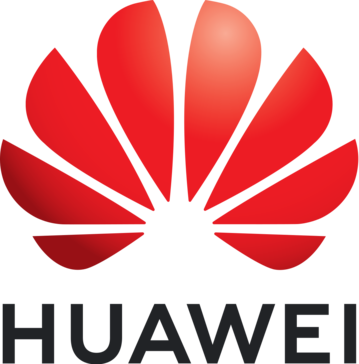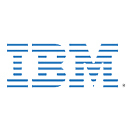Description

Kunpeng Devkit

IBM Semeru Runtimes

Microsoft Build of OpenJDK
Comprehensive Overview: Kunpeng Devkit vs IBM Semeru Runtimes vs Microsoft Build of OpenJDK
The Kunpeng Devkit, IBM Semeru Runtimes, and Microsoft Build of OpenJDK are all important tools within the ecosystem of software development, particularly for developers working with Java and cloud computing. Here, we’ll cover their primary functions, target markets, market share, user base, and key differentiating factors.
Kunpeng Devkit
a) Primary Functions and Target Markets
- Primary Functions: Kunpeng Devkit is a development kit provided by Huawei, designed to optimize software applications for Kunpeng processors. It offers a comprehensive suite of tools to facilitate development, simulation, and performance tuning.
- Target Markets: The primary target market is enterprises and developers working on applications that will run on Huawei’s Kunpeng hardware architectures, particularly in markets adopting Ascend and Kunpeng silicon for cloud and AI workloads.
b) Market Share and User Base
- Market Share: The Kunpeng platform is quite niche, primarily appealing within China due to Huawei’s strong positioning there, but it is growing in other regions with a focus on diversifying hardware across global markets influenced by Huawei’s technological ecosystem.
- User Base: The user base is largely composed of enterprise developers and cloud service providers utilizing Huawei’s hardware for specific performance or regulatory needs.
c) Key Differentiating Factors
- Hardware Optimization: It is specifically optimized for Huawei’s processors, offering significant performance and efficiency benefits for applications running on its hardware.
- Regional Focus: Significant in China, with growing interest in specific sectors such as telecommunications and government applications in other territories.
IBM Semeru Runtimes
a) Primary Functions and Target Markets
- Primary Functions: IBM Semeru Runtimes are Java runtime environments that include OpenJ9, optimized for cloud environments. They are designed for high performance, low memory footprint, and fast startup times in Java applications.
- Target Markets: Enterprises across various industries needing robust, enterprise-level Java applications, particularly in hybrid and multi-cloud environments.
b) Market Share and User Base
- Market Share: IBM has a well-established presence in the enterprise sector, with Semeru Runtimes being part of the wider adoption of IBM’s enterprise solutions.
- User Base: Organizations already using IBM cloud solutions or looking for high-performance Java environments, typically large to medium-sized enterprises and government entities.
c) Key Differentiating Factors
- Enterprise-grade Performance: IBM Semeru emphasizes performance optimization, making it ideal for demanding enterprise applications.
- Integration with IBM Cloud: Seamless integration with IBM’s cloud and AI solutions offers added benefits for users invested in IBM’s ecosystem.
Microsoft Build of OpenJDK
a) Primary Functions and Target Markets
- Primary Functions: Microsoft’s Build of OpenJDK is a free, open-source, long-term support distribution of OpenJDK. It aims to provide a reliable and secure Java development platform, supported by Microsoft.
- Target Markets: Developers and organizations looking for a stable, supported version of OpenJDK for use in development and production, particularly users of Azure or other Microsoft products.
b) Market Share and User Base
- Market Share: Gaining traction due to Microsoft’s significant influence in the tech industry. It benefits from existing Microsoft Azure and enterprise services customers.
- User Base: Developers and organizations utilizing Microsoft’s cloud services, especially those transitioning to OpenJDK from proprietary Java versions.
c) Key Differentiating Factors
- Microsoft Ecosystem Integration: Deeply integrated with Microsoft’s broader ecosystem, including cloud services (Azure).
- Open Source Commitment: Strong advocacy for open source with robust support and free usage, which appeals to a growing number of enterprises looking for cost-effective solutions.
- Support and Licensing: Provides long-term support and regular updates, backed by Microsoft’s enterprise support services.
Comparative Overview
- Market Presence: IBM and Microsoft hold significant influence in the enterprise sector due to their established brand presence and broad cloud services. Kunpeng is more niche, focusing heavily on specific hardware optimizations and regional advantages.
- Ecosystem Role: Each has a unique role within their ecosystem; Kunpeng is tied to Huawei hardware, IBM Semeru is part of a broader IBM cloud strategy, while Microsoft’s Build offers strong integration with Azure.
- Technical Differentiation: Focus varies from hardware performance (Kunpeng) to enterprise-grade optimizations (IBM Semeru) and open-source stability (Microsoft Build).
Overall, these products serve distinct needs in the Java and cloud computing ecosystems, catering to diverse user bases with their unique capabilities and integrations.
Contact Info

Year founded :
Not Available
Not Available
Not Available
Not Available
Not Available

Year founded :
Not Available
Not Available
Not Available
Not Available
Not Available

Year founded :
Not Available
Not Available
Not Available
Not Available
Not Available
Feature Similarity Breakdown: Kunpeng Devkit, IBM Semeru Runtimes, Microsoft Build of OpenJDK
When comparing Kunpeng Devkit, IBM Semeru Runtimes, and Microsoft Build of OpenJDK, it's essential to evaluate them across common feature sets, user interface differences, and any unique characteristics that distinguish them from one another. While each serves as a Java development kit/runtime with overlaps due to their Java compliance, they also cater to different platforms and use cases, resulting in distinct features.
a) Core Features in Common:
-
Java Compatibility:
- All three products provide Java Virtual Machine (JVM) implementations that are compatible with standard Java Development Kit (JDK) tools and libraries.
-
OpenJDK Base:
- Each is built upon OpenJDK, ensuring adherence to open-source standards and enabling users to run Java applications with standard performance and reliability.
-
Cross-platform Support:
- They offer support for multiple operating systems, allowing developers to build applications that can run on various platforms, such as Windows, Linux, and MacOS.
-
Development Tools Integration:
- Support for integration with popular development environments (IDEs) like IntelliJ IDEA, Eclipse, and Visual Studio Code.
-
Performance Optimizations:
- Built-in performance improvements and enhancements for running Java applications efficiently at scale.
b) User Interface Comparison:
-
Kunpeng Devkit:
- Primarily targeted for Huawei's Kunpeng processors, it comes as part of a broader toolkit with other development tools. Its user interface generally relies on command-line tools or existing IDEs supplemented by specific plugins that optimize for their hardware.
-
IBM Semeru Runtimes:
- Semeru is focused on high-performance Java workloads and offers tools compatible with IBM's ecosystem. It uses Eclipse IDE integrations and other IBM tools for management, offering a robust command-line and GUI for JVM performance tuning and debugging.
-
Microsoft Build of OpenJDK:
- Similar to IBM, it integrates seamlessly with Microsoft's development tools, particularly Visual Studio Code. The UI predominantly involves existing IDE support inline with Microsoft’s suite, offering extensions and plugins that improve ease of use within these environments.
c) Unique Features:
-
Kunpeng Devkit:
- Hardware Optimization: Specifically optimized for Huawei’s Kunpeng ARM processors, providing enhancements that leverage the underlying hardware for better performance.
- ARM-focused Tools: Offers additional tools specific for ARM architecture development, which are less emphasized in the other products.
-
IBM Semeru Runtimes:
- OpenJ9 JVM: Uses the Eclipse OpenJ9 JVM, which is known for its smaller memory footprint and faster startup time compared to the standard HotSpot JVM.
- Enterprise Focus: Tailored for enterprise environments, providing advanced monitoring and management tools aligning with IBM’s WebSphere and cloud services.
-
Microsoft Build of OpenJDK:
- Azure Integration: Well-integrated with Microsoft Azure, making it highly suitable for developers looking to deploy Java applications to the Microsoft cloud environment.
- Long-Term Support (LTS): Microsoft emphasizes long-term stability and support, providing extended support cycles for their OpenJDK builds, benefiting enterprises requiring consistent support.
These products share a core foundation due to their OpenJDK roots, yet they distinguish themselves with unique enhancements and optimizations suited for their respective ecosystems or targeted hardware platforms.
Features

Not Available

Not Available

Not Available
Best Fit Use Cases: Kunpeng Devkit, IBM Semeru Runtimes, Microsoft Build of OpenJDK
When considering Kunpeng Devkit, IBM Semeru Runtimes, and Microsoft Build of OpenJDK, it's crucial to understand their unique attributes and targeted use cases to determine the best fit for different businesses or projects. Here's a breakdown of when each might be the preferred choice:
a) Kunpeng Devkit
Best Fit Use Cases:
- Hardware-Specific Optimization: Kunpeng Devkit is specifically optimized for Huawei's Kunpeng processors. Businesses that have invested in infrastructure utilizing these processors would benefit significantly from this development kit.
- High-Performance Computing (HPC): Industries involved in data-intensive applications, such as cloud computing, scientific research, and big data processing, can leverage the performance enhancements provided by Kunpeng's architecture.
- Enterprises in China and Asia: Companies operating within regions where Kunpeng processors have a strong presence or where there's a push for indigenous technology adoption.
Suitable Businesses/Projects:
- Enterprises seeking to maximize performance gains from their Kunpeng processor-based systems.
- Organizations focused on developing applications requiring high computational throughput with localized support.
b) IBM Semeru Runtimes
Preferred Scenarios:
- Enterprise-Level Java Applications: IBM Semeru Runtimes are built for enterprise applications requiring robust, scalable, and secure Java environments.
- Cloud-Native Deployments: The runtimes offer optimizations for cloud environments, supporting containerization and microservices-based architectures. Organizations leveraging IBM Cloud or similar setups could particularly benefit.
- Performance and Transactional Integrity Needs: Applications that require high transactional integrity, such as financial services, would find the optimizations and features of Semeru beneficial.
Suitable Businesses/Projects:
- Large enterprises with complex Java applications needing reliable and efficient Java runtimes.
- Industries like finance, telecommunications, and healthcare, where robust performance and security are crucial.
c) Microsoft Build of OpenJDK
When to Consider:
- Microsoft Ecosystem Integration: Organizations using Azure or other Microsoft services can benefit from seamless integration and support when opting for Microsoft's Build of OpenJDK.
- OpenJDK Compatibility with Azure: Organizations moving workloads to Azure that want a fully supported OpenJDK option.
- Cross-Platform Development: For businesses looking for strong cross-platform Java development support with ties to Microsoft’s ecosystem.
Suitable Businesses/Projects:
- Enterprises that already leverage Microsoft technology and services, particularly those utilizing Azure.
- Sectors like retail, e-commerce, and startups looking for cost-effective and scalable Java solutions integrated with cloud services.
d) Industry Verticals and Company Sizes
Industry Caterings:
- Kunpeng Devkit is especially suitable for sectors focusing on regional technological growth and optimization on specific hardware architectures.
- IBM Semeru Runtimes cater to traditional enterprises focusing on stability, scalability, and transaction-heavy applications, making them ideal for finance, telecom, and government sectors.
- Microsoft Build of OpenJDK appeals to sectors favoring cloud-based, scalable solutions, with a strong inclination towards enterprises involved in digital transformation and modernization efforts.
Company Sizes:
- Kunpeng Devkit often attracts large-scale enterprises or governmental projects that have the resources and hardware alignment to fully leverage Kunpeng processors.
- IBM Semeru Runtimes are geared towards medium to large enterprises that need robust, reliable, and scalable Java solutions at an enterprise level.
- Microsoft Build of OpenJDK is versatile but might appeal more to small and medium-sized enterprises (SMEs) and startups, especially those aligned with the Microsoft Azure ecosystem for cloud architecture.
Choosing the right platform depends heavily on existing infrastructure, strategic technological alliances, and specific application needs. Each tool provides unique advantages depending on these contexts.
Pricing

Pricing Not Available

Pricing Not Available

Pricing Not Available
Metrics History
Metrics History
Comparing undefined across companies
Conclusion & Final Verdict: Kunpeng Devkit vs IBM Semeru Runtimes vs Microsoft Build of OpenJDK
When evaluating Kunpeng Devkit, IBM Semeru Runtimes, and Microsoft Build of OpenJDK, it's essential to consider factors such as performance, compatibility, support, and overall value to determine which product may be the most suitable for various development needs.
Conclusion and Final Verdict:
a) Best Overall Value:
- Microsoft Build of OpenJDK seems to offer the best overall value, especially for enterprises heavily invested in the Microsoft ecosystem or those leveraging Azure cloud services. It benefits from robust support and integration with other Microsoft tools, making it particularly appealing for existing Microsoft customers.
b) Pros and Cons:
Kunpeng Devkit:
- Pros:
- Optimized for the Huawei Kunpeng processors, providing excellent performance on those chipsets.
- Offers specialized tools for accelerating development on ARM architectures.
- Strong support for multi-core processing.
- Cons:
- Limited appeal outside the Huawei ecosystem.
- May not be as broadly applicable or supported as the other two runtimes for non-ARM architectures.
- Regional/national considerations due to geopolitical factors might affect adoption.
IBM Semeru Runtimes:
-
Pros:
- Built on the Eclipse OpenJ9 project, providing performance optimizations such as reduced footprint and faster startup times.
- Strong emphasis on cloud-native enhancements, making it a good choice for cloud-based deployments.
- Excellent support from IBM, especially for enterprises already using IBM technologies.
-
Cons:
- May have a steeper learning curve if transitioning from other runtimes.
- Could require additional adjustments for those not familiar with Eclipse OpenJ9 optimizations.
Microsoft Build of OpenJDK:
- Pros:
- Seamless integration with Azure and other Microsoft services.
- Strong community backing and frequent updates.
- Easy transition for developers familiar with Java environments on Windows.
- Cons:
- While robust, might not offer the highly tailored performance enhancements seen in the Kunpeng or Semeru runtimes for specific use cases.
- Potential concerns for non-Microsoft ecosystems around support.
c) Specific Recommendations:
-
For Users with Specific Hardware Needs: If leveraging Huawei Kunpeng architecture is key, Kunpeng Devkit is the most sensible choice for its optimized performance and toolset. It is particularly relevant for users within China or those looking to optimize applications for ARM processors.
-
For Cloud-Native and Enterprise Environments: IBM Semeru Runtimes can be a compelling option due to its cloud-oriented enhancements and strong support from IBM. Organizations already using IBM cloud technologies will find the integration beneficial.
-
For Microsoft-Centric Organizations: Microsoft Build of OpenJDK is advisable for companies already entrenched in the Microsoft ecosystem, especially those utilizing Azure. Its integration capabilities make it less complex and potentially more cost-effective for Microsoft customers.
Ultimately, the right choice depends on the specific needs of the user, considering factors such as existing technology stack, hardware architecture, and specific performance requirements. Each product offers distinct advantages that can align well with particular strategic goals and operational environments.